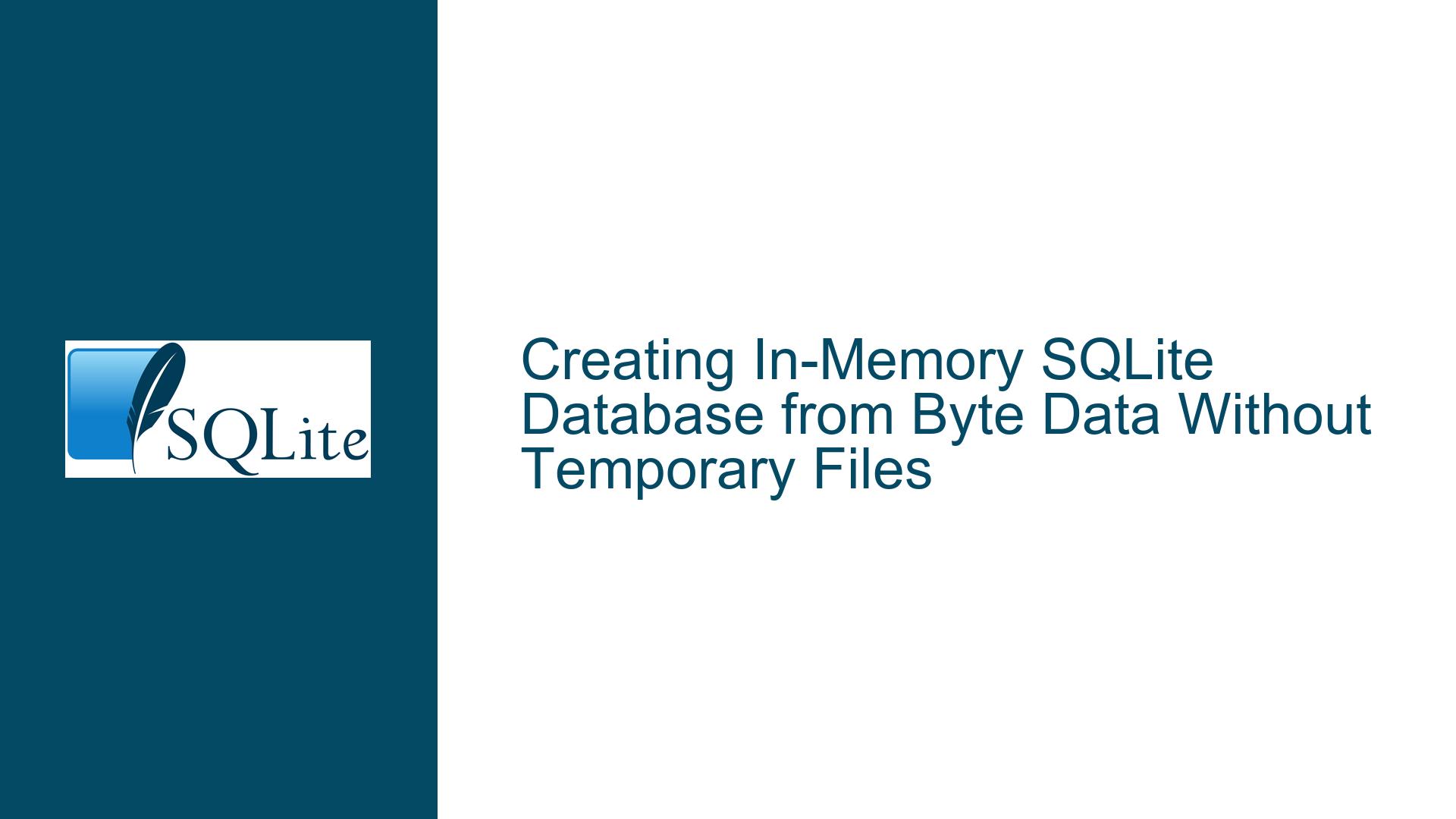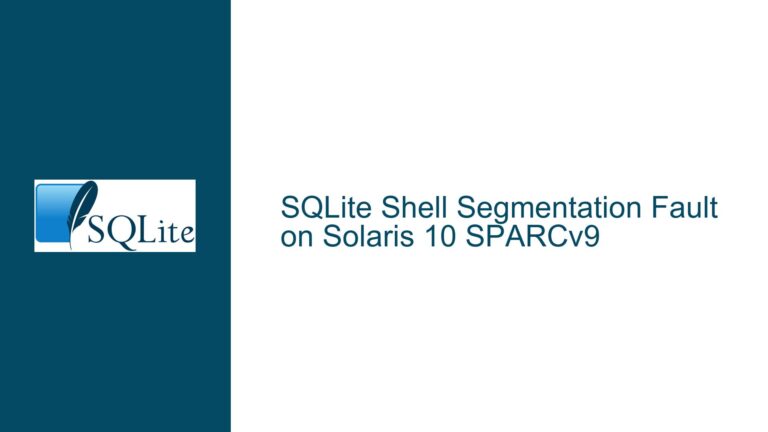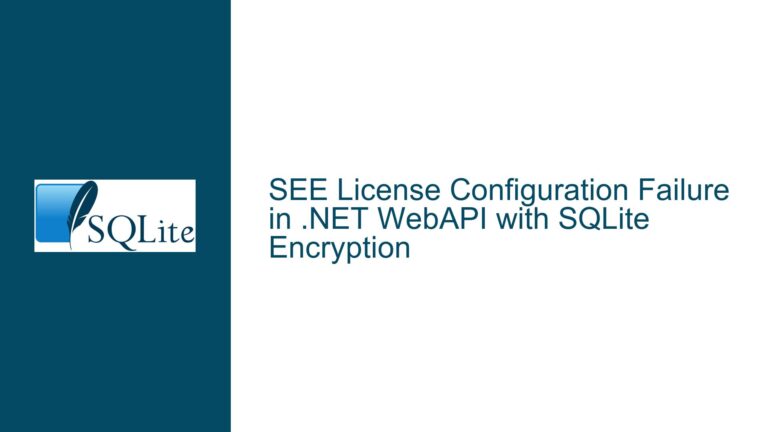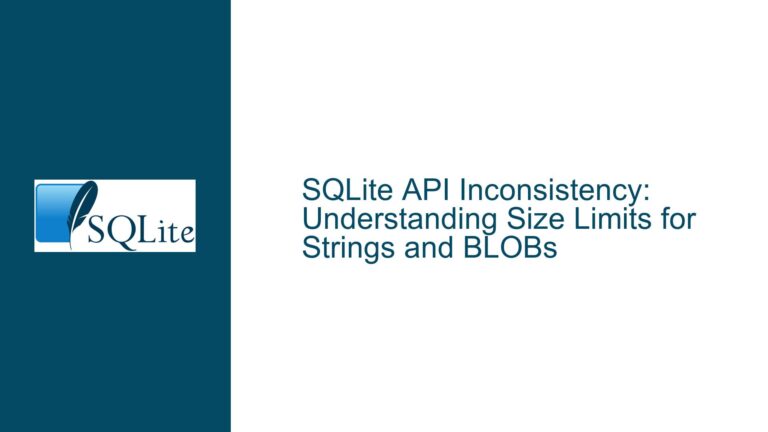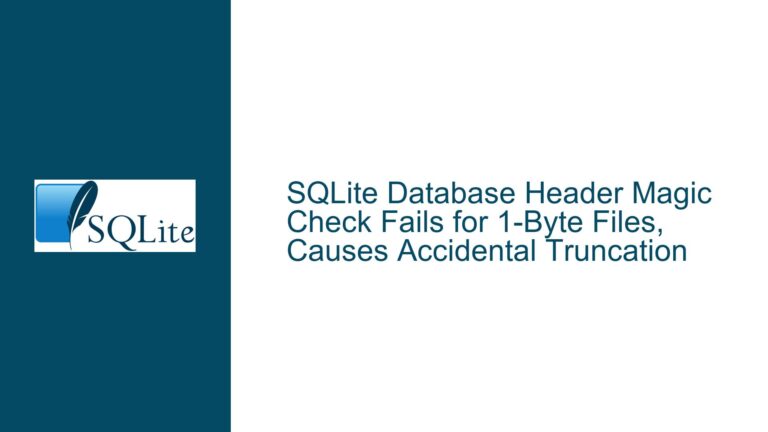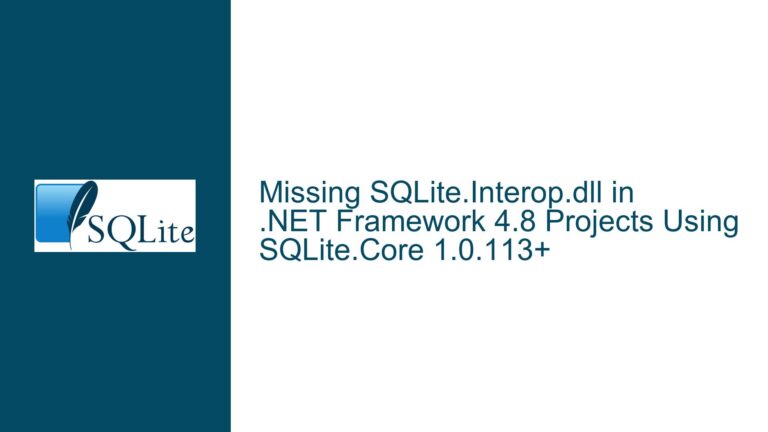Creating In-Memory SQLite Database from Byte Data Without Temporary Files
SQLite In-Memory Database Initialization from Byte Data
The core issue revolves around the challenge of initializing an SQLite in-memory database directly from a byte array without the need to create a temporary file. This scenario is common in environments where database files are stored in cloud storage (e.g., Amazon S3) and need to be accessed frequently without the overhead of file I/O operations. The traditional approach involves downloading the database file from the cloud, writing it to a temporary file on disk, and then opening it as a read-only database. While this method works, it introduces unnecessary I/O operations and can be inefficient, especially in high-performance or resource-constrained environments.
The goal is to bypass the temporary file creation step and directly load the byte data into an in-memory SQLite database. This would not only reduce the latency associated with file operations but also simplify the code by eliminating the need for temporary file management. However, SQLite does not provide a direct API to initialize an in-memory database from a byte array out of the box. This limitation necessitates exploring alternative methods, such as using the SQLite VFS (Virtual File System) layer or leveraging specific SQLite C API functions designed for serialization and deserialization.
SQLite Serialization and Deserialization API as a Solution
The primary cause of the issue is the lack of a straightforward API in SQLite to directly initialize an in-memory database from a byte array. SQLite is designed with a file-based approach in mind, where databases are typically stored as files on disk. This design choice is rooted in SQLite’s primary use case as an embedded database for applications that require a lightweight, file-based storage solution. However, this design does not inherently support the direct loading of a database from a byte array into memory, which is a requirement in scenarios where the database is stored in cloud storage or other non-file-based storage systems.
The SQLite C API provides a set of functions for serializing and deserializing databases, namely sqlite3_serialize and sqlite3_deserialize. These functions allow for the conversion of a database between its on-disk format and an in-memory representation. The sqlite3_deserialize function, in particular, can be used to load a database from a byte array into an in-memory database. This function takes a byte array representing the database file and initializes an in-memory database with the contents of that byte array. This approach effectively bypasses the need for temporary file creation and allows for direct initialization of an in-memory database from byte data.
However, the use of sqlite3_deserialize requires careful handling of the byte array and the in-memory database. The byte array must be a valid SQLite database file in its serialized form, and the in-memory database must be properly initialized before the deserialization process can occur. Additionally, the deserialization process must be performed in a way that ensures the integrity of the database and avoids potential issues such as memory leaks or corruption.
Implementing sqlite3_deserialize for Direct In-Memory Database Initialization
To implement the direct initialization of an in-memory SQLite database from a byte array, the following steps should be taken:
Download the Database Byte Data from Cloud Storage: The first step is to retrieve the byte data representing the SQLite database from the cloud storage system (e.g., Amazon S3). This can be done using the appropriate SDK or API provided by the cloud storage provider. The byte data should be stored in a buffer or array that can be passed to the
sqlite3_deserializefunction.Initialize an In-Memory SQLite Database: Before deserializing the byte data, an in-memory SQLite database must be initialized. This can be done using the
sqlite3_open_v2function with theSQLITE_OPEN_MEMORYflag. This function creates a new in-memory database and returns a handle to it, which will be used in the deserialization process.Deserialize the Byte Data into the In-Memory Database: Once the in-memory database is initialized, the
sqlite3_deserializefunction can be used to load the byte data into the database. This function takes the database handle, the byte array, and the size of the byte array as parameters. It then deserializes the byte array into the in-memory database, effectively loading the database contents into memory.Verify the Integrity of the In-Memory Database: After deserialization, it is important to verify the integrity of the in-memory database. This can be done by performing a series of checks, such as running a
PRAGMA integrity_checkcommand or querying the database to ensure that the data has been correctly loaded. Any errors or inconsistencies should be logged and handled appropriately.Use the In-Memory Database for Read-Only Operations: Once the in-memory database is successfully initialized and verified, it can be used for read-only operations. Since the database is stored in memory, it will provide fast access to the data without the overhead of file I/O operations. However, it is important to note that any changes made to the in-memory database will not be persisted unless explicitly saved back to the cloud storage system.
Clean Up Resources: After the in-memory database is no longer needed, it is important to clean up any resources associated with it. This includes closing the database handle using the
sqlite3_closefunction and freeing any memory allocated for the byte array. Proper resource management is crucial to avoid memory leaks and ensure the stability of the application.
By following these steps, it is possible to initialize an in-memory SQLite database directly from a byte array without the need for temporary file creation. This approach leverages the sqlite3_deserialize function to efficiently load the database contents into memory, providing a fast and resource-efficient solution for accessing database data stored in cloud storage systems.
| Step | Description | Key Considerations |
|---|---|---|
| 1 | Download the Database Byte Data from Cloud Storage | Ensure the byte data is correctly retrieved and stored in a buffer. |
| 2 | Initialize an In-Memory SQLite Database | Use sqlite3_open_v2 with the SQLITE_OPEN_MEMORY flag. |
| 3 | Deserialize the Byte Data into the In-Memory Database | Use sqlite3_deserialize with the correct parameters. |
| 4 | Verify the Integrity of the In-Memory Database | Perform checks to ensure data integrity. |
| 5 | Use the In-Memory Database for Read-Only Operations | Ensure the database is used in a read-only manner. |
| 6 | Clean Up Resources | Properly close the database and free allocated memory. |
This method provides a robust solution for initializing an in-memory SQLite database from byte data, eliminating the need for temporary file creation and reducing the overhead associated with file I/O operations. By leveraging the SQLite serialization and deserialization API, developers can achieve efficient and reliable database access in cloud-based environments.
